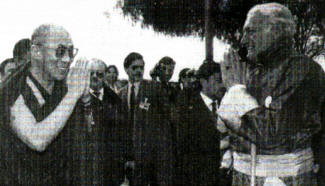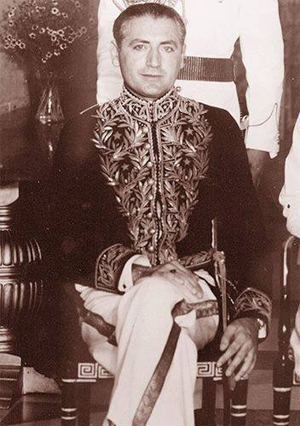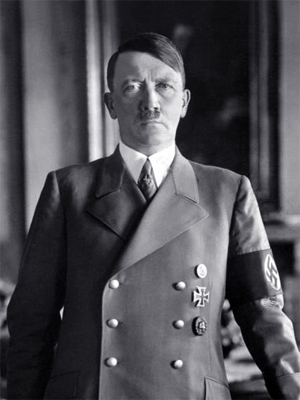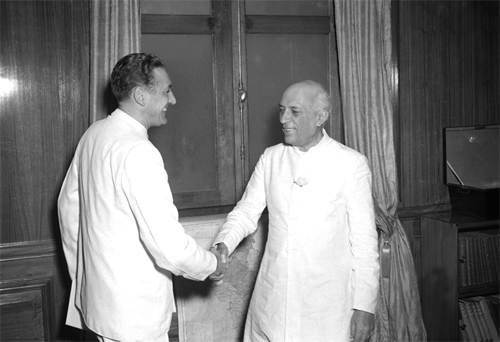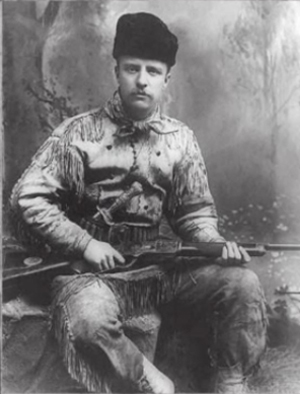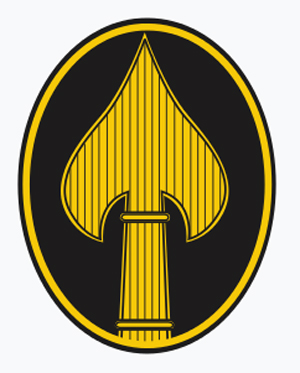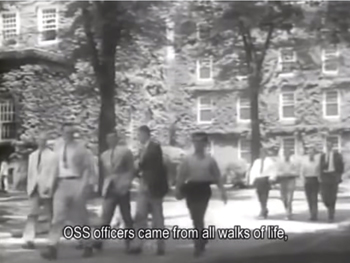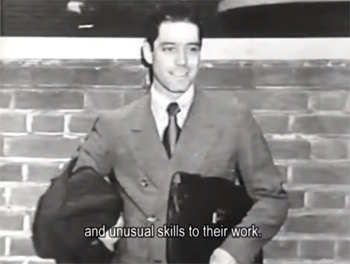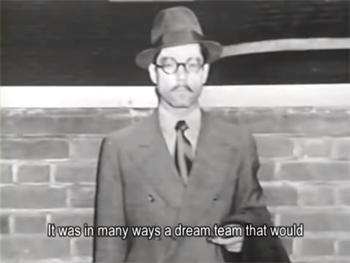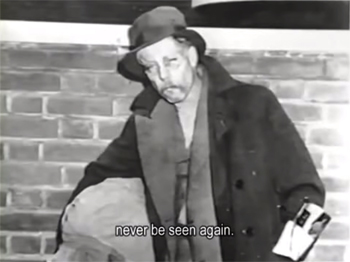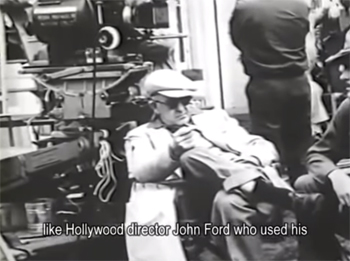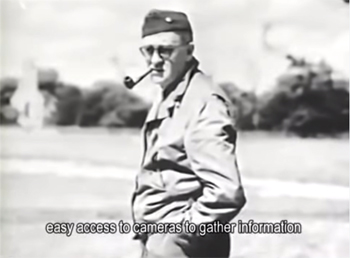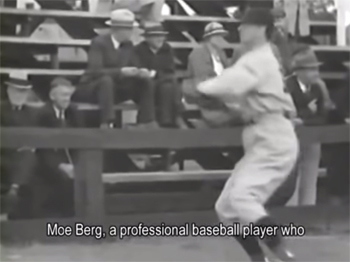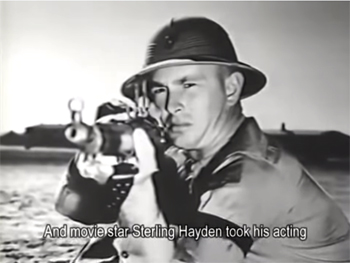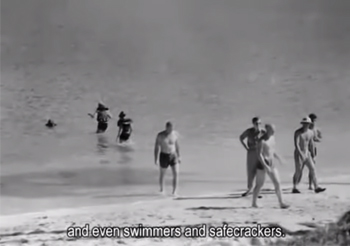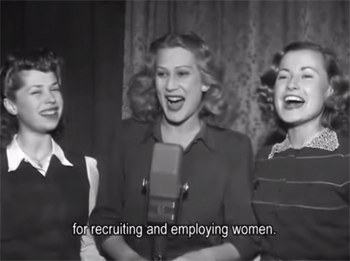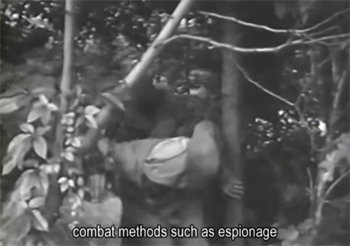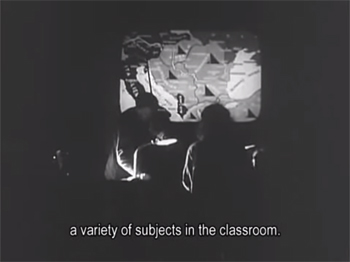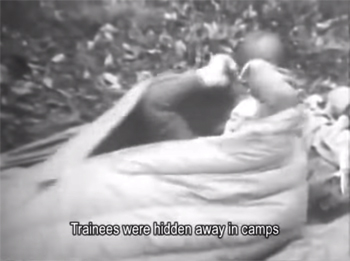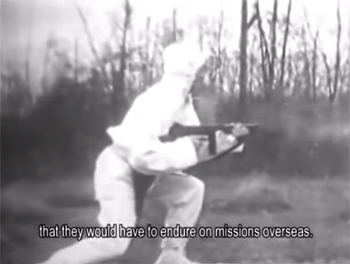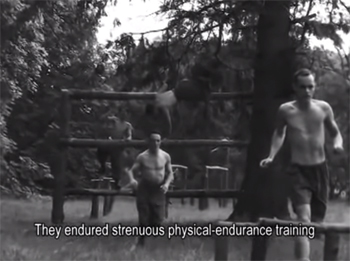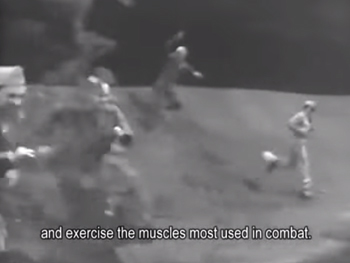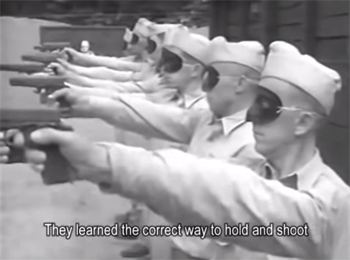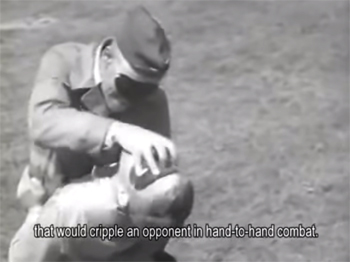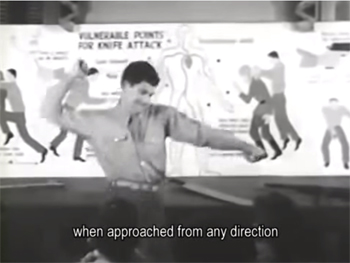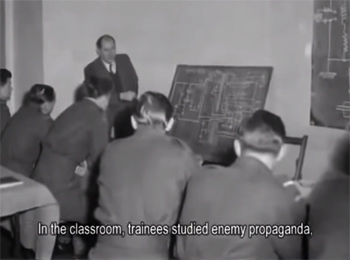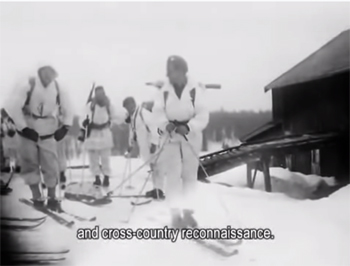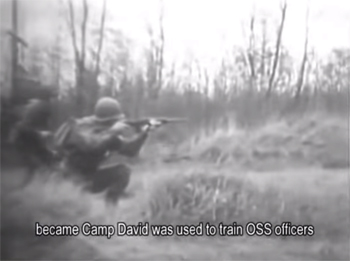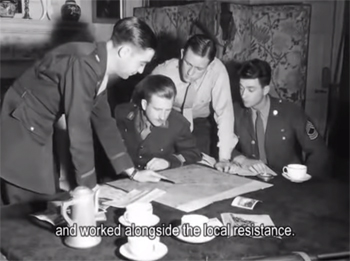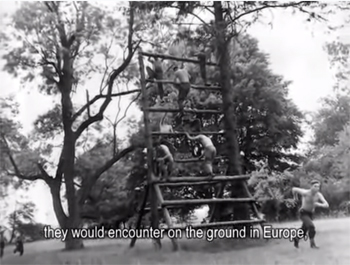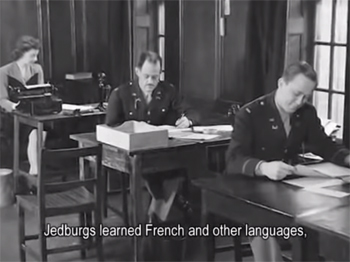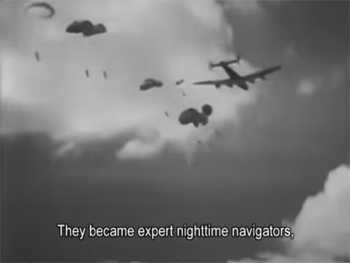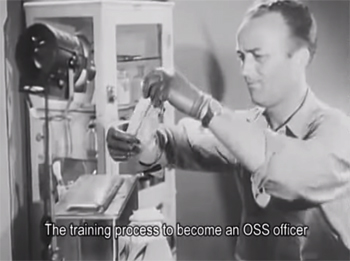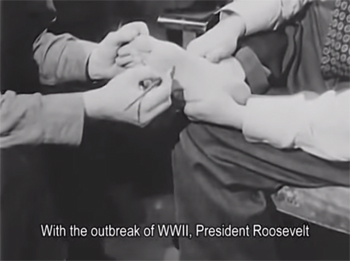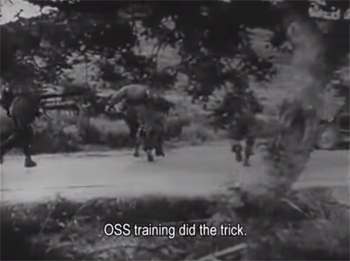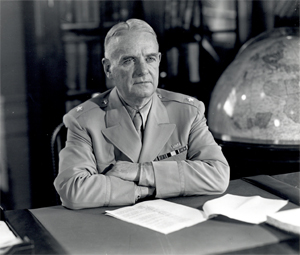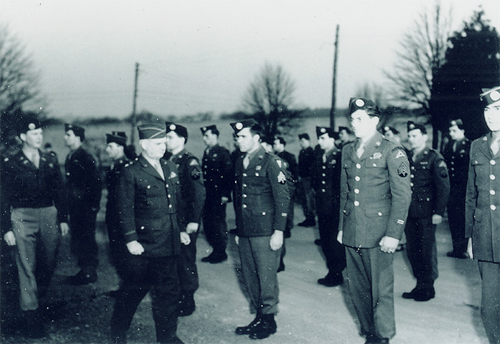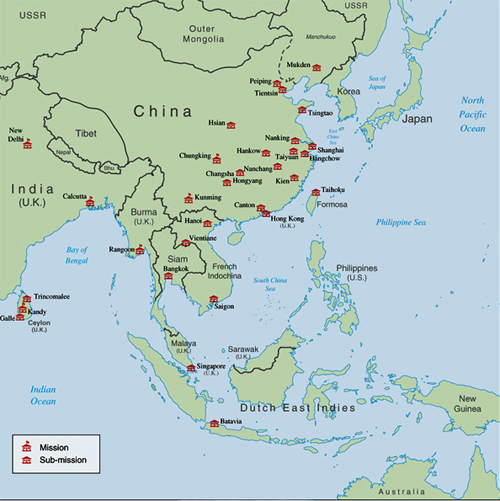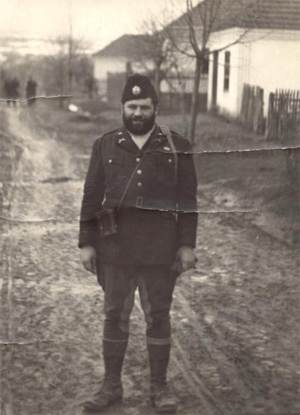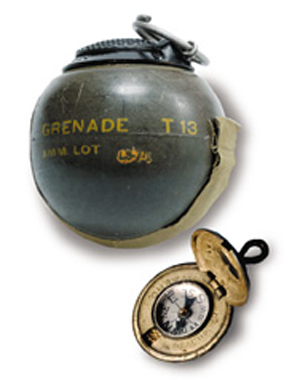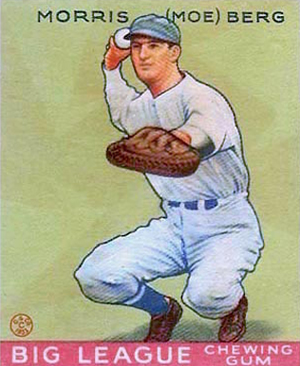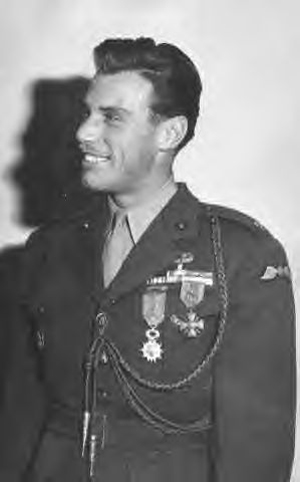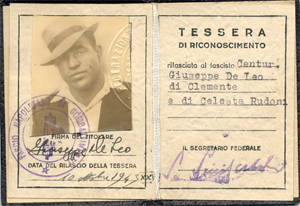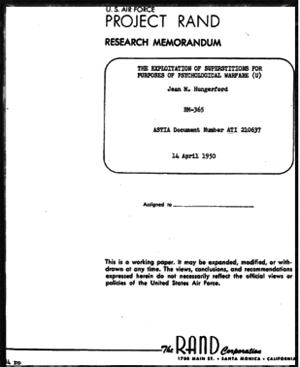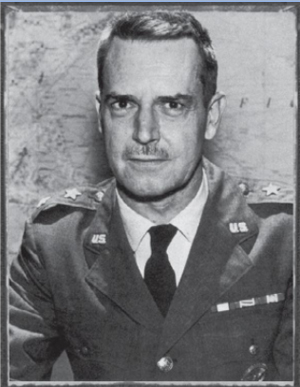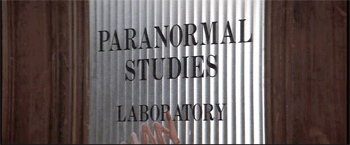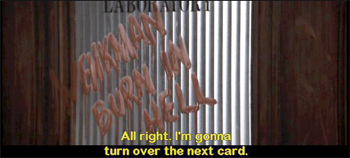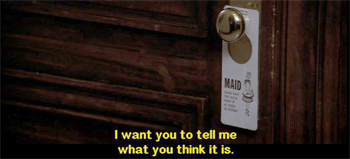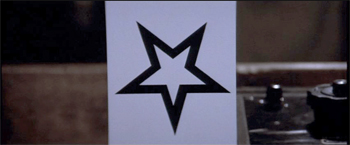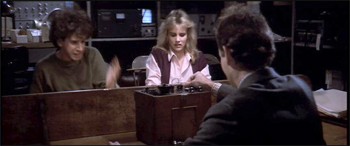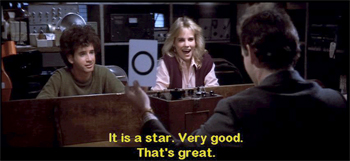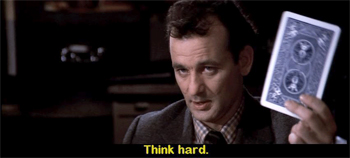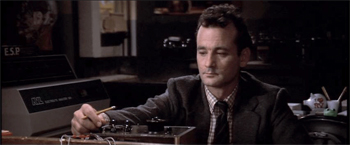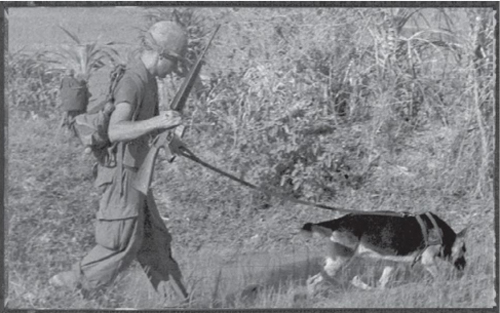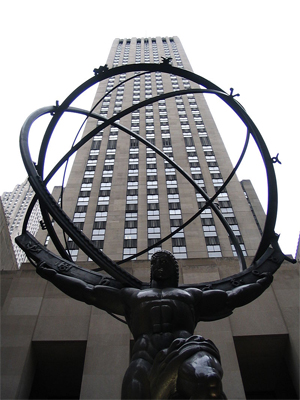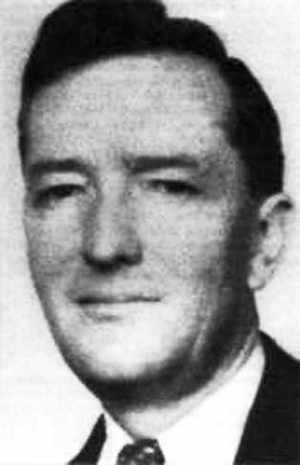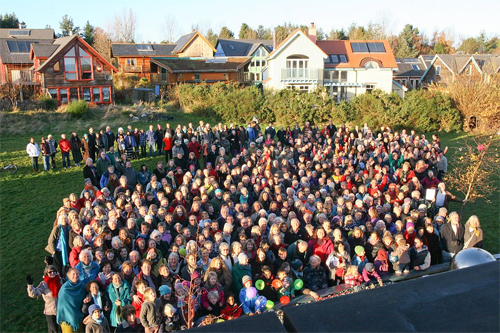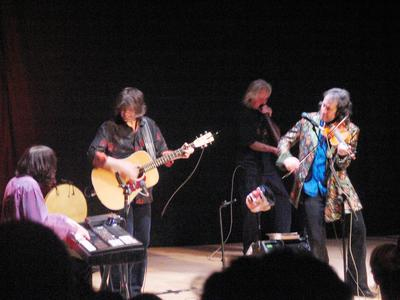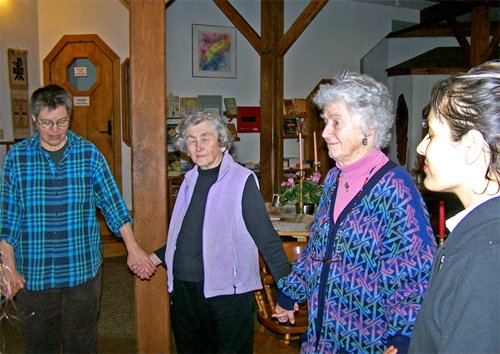And then there's the late anthropologist George Agogino. Not only did he pen the preface to Ivan T. Sanderson's aforementioned Abominable Snowmen book, but he was also a consultant to Tom Slick. And Agogino had one more arrow in his quiver: He had been contracted to do work for the CIA in the past.
The Archaeologist-Spies Who Went Into the Cold (To Search for the Abominable Snowman)
George Allen Agogino can perhaps lay claim to being the spookiest of all serious archaeologists in the later twentieth century, a triple threat of archaeological scholar, cryptozoologist, and spy. Agogino was a respected archaeologist who had founded Eastern New Mexico University's Anthropology Department and had extensive experience in the southwestern United States. He collaborated with geologist C. Vance Haynes to examine the controversial Sandia Cave site.100 Excavations at Sandia Cave in New Mexico had turned up what appeared to be mammoth bones and Paleo-Indian artifacts sealed within a sequence of cemented breccia layers with lower strata under a calcium carbonate deposit thought to be at least 25,000 years old and with a uranium series date of more than 200,000 years ago.101 For much of the twentieth century, distinctive Clovis projectile points dating to 14,000 years ago were considered the oldest in the Americas, a model generally discarded today. Haynes had been a key critic of pre-Clovis claims, and in the case of Sandia Cave he identified the cause of the stratigraphic problems to be bioturbation, disturbance by burrowing rodents.102
Agogino was one of the scientific advisors in the yeti expeditions organized by the Texas oil millionaire Tom Slick and his tycoon friends. The yeh-teh has roots in Nepalese culture but was appropriated in the twentieth century and transformed by Westerners into the more ape-like "abominable snowman." That form of the legend leaked into the global imagination in 1920 alongside media coverage of attempts to climb Mount Everest. The climbing expedition led by Eric Shipton in 1951 catapulted the yeti to international fame with photographs of a line of footprints, including one of a footprint and an icepick, a tool of exploration, added for scale. Despite subsequent claims that the footprint was a composite of two mundane prints melted in the sun, or that Shipton had faked the line of tracks, the yeti became the subject of intense interest by real and armchair explorers.103 Sir Edmund Hillary, the leader of the first Western team to summit Everest, organized an unsuccessful expedition to track the snowman. Slick entered the scene at this point, hiring primarily nonscientist trackers and explorers to hunt the yeti and bring evidence back to specialists working with Slick.
As part of Slick's 1959 expedition, Agogino coordinated a secret network of researchers on yeti fecal material at laboratories in the United States. Agogino's equivalent in the United Kingdom was William Charles Osman Hill, an accomplished primatologist who had also investigated the Nittaewo little people legends of Sri Lanka and, like MacRitchie and others had concluded for Europe half a century earlier, suggested that they might be a relict population of fossil hominins. Agogino and Osman Hill were the tissue connecting other anthropologists and researchers quietly working with Slick's monster hunters. An opinion survey twenty years after Slick's expedition found that one in eight physical anthropologists believed that mystery primates like the yeti might be real.104
Agogino was never comfortable with Slick's team of cryptozoologists. He was friendly with the television animal presenter and paranormal author Ivan Sanderson and collaborated with him in various ways but thought that Sanderson's low-quality work was harming the science. While Agogino was involved from the start with Slick's hunt for North America's Bigfoot, he found the unprofessionalism of Slick's yeti hunters had turned more toward fraud. He was increasingly skeptical as each physical sample he analyzed turned out to be fraudulent or mistaken. Yet Agogino continued to work in cryptozoology, including appearing on television.105
Slick's most infamous cryptozoology actions involved the Pangboche hand, a skeletal "yeti" relic in a Nepalese lamasery. Cryptozoologist Peter Byrne obtained parts of the hand by swapping them with known human thumb and phalanx bones, unbeknown to the monks of the lamasery. The supposed yeti bones were then passed to the actor Jimmy Stewart and his wife, Gloria, who hid them in her underwear (not while being worn) and smuggled them out of India to England. Both Agogino and physical anthropologist Carleton Coon were skeptical of the hand. Coon, an OSS veteran wounded in North Africa, suggested that the yeti may be related to Gigantopithecus, a massive Pliocene-Pleistocene ape of Southeast Asia....
-- Spooky Archaeology: Myth and the Science of the Past, by Jeb J. Card
George Agogino
When he joined the Slick project, George Agogino held a position teaching anthropology and archaeology in South Dakota. Like so many academics in this story, Agogino was at first unsure as to whether the Yeti existed, but he grew intrigued by the idea and felt it a reasonable scientific pursuit to find out once and for all. He accepted Slick's request to act as a consultant. He also quietly contacted Carleton Coon for advice on how to deal with Slick. Agogino and Coon began to correspond regularly and had an entire discourse on the proceedings outside the official Slick expedition correspondence track. They did this for a number of reasons. First, while Coon was in the Slick camp, he had also been wooed by Life magazine to be part of their Yeti project and to spy on Slick.56 Secondly, Coon (and then Agogino) had suspicions about Slick, his methods, and motivations. Having been enthusiastic about going on the Yeti expedition, Coon remained upset with Slick for being demoted off the field team at the last minute. Agogino met with Coon at his Harvard office for lunch just after Christmas of 1958 and discussed how to deal with the wealthy Texan. Coon told Agogino to watch his step, to which Agogino replied, "You can be sure I will be most careful in my dealings with him." He also lamented how some of their colleagues discounted the idea of a Yeti, unwilling to look into it. Determined, he told Coon, "Somebody must do this work or the situation will never be cleared up. It just makes me angry we must deal with individuals like Tom Slick."57 Agogino appreciated Slick's commitment, and his money, but was troubled by his and his mountaineer associates' lack of scientific training and apparent focus on adventure rather than research. He liked to refer to Slick's entourage as "the Slick Mob."58
In 1959, as the Dalai Lama was fleeing his home, Agogino began to receive field samples of supposed Yeti dung from Nepal. He sent them off to Heuvelmans, Coon, Osman-Hill, and Izzard. They all (except for Izzard, who had no such analytical expertise or facilities) concluded the droppings did not come from a primate. When Slick sent Agogino a small black and white photo of the Pangboche hand for confidential inspection Agogino sent a copy to an unimpressed Carleton Coon.59 That no trained zoologists accompanied the team in the field to determine useful from useless materials, and no one with training in technical photography to record finds, quickly showed its drawbacks. The mountaineers and adventurers who made up the team had no experience making such decisions or producing a proper photographic record. Had Coon gone along, as he thought he should have, an enormous amount of time and resources would not have been wasted. This concerned Agogino more than ever. Instead of preparing for important details, the Slick people had made preparations for situations they had no experience with and which Agogino felt unlikely to occur. He told Coon, "The Slick Mob is resorting to live traps and power weapons with drugs in the payload instead of lead."60 During his trip, Slick encountered "Boris of Xanthmandu." Slick utilized Lissanevitch's services to smooth the way for his expedition and, in return, presented the Russian with one of the "power weapons" Agogino referred to. Slick had inquired about tranquilizer guns with Cornell University as well as the American Museum of Natural History. It was an odd contraption Lissanevitch's biographer -- and Yeti debunker -- Michel Peissel called an "Alka Seltzer gun," a kind of tranquilizer projector which had both a sleeping agent and one to wake the creature back up. Lissanevitch feared lending it to anyone or even touching the thing himself.61
George Agogino thought it the wildest fantasy to try to catch a Yeti alive and bring it back home like King Kong. As did Coon, Agogino thought the emphasis on catching a Yeti ill-advised and did not like the way the Pangboche hand had been treated. The field team also sent back photos and X-rays of another artifact called the "Makalu Hand." All the scientists who looked at the photos concluded dejectedly that it was from either a wolf or a snow leopard, not a legendary hairy monster. Agogino also grumbled about how much work he did for Slick without getting paid, and he did not care for the press coverage or for the increasingly circus-like atmosphere. He complained to Coon: "I certainly hope our profession can do better than that."62 The two scientists tried to determine Slick's deeper motivations, but without success. Agogino voiced his concerns about the Slick expedition to Ralph Izzard and William Charles Osman-Hill and told Coon "they seem as confused as we" as to Slick's intentions.63
Despite his reservations, Agogino continued his commitment to the problem. He sent Coon a list of everything that had been collected, and sent hair samples to zoologist Charles Leone of the University of Kansas for serological analysis, and similar specimens from the Pangboche scalp to retired Rutgers University zoologist and mammal hair and blood specialist Leon Hausman (1889-1966). Hausman had tested the first "Yeti" hair samples to come out of Nepal in 1953, so Agogino went to him in 1959. Rutgers had recently opened the first major serology, or blood research, laboratory and it was hoped the new facility might crack the case of the Yeti's blood. Hausman found the 1953 sample to be several hundred years old, consistent with a religious relic, but made of hair from an animal unlikely to be the monster of Asia.64
By now, Agogino found himself in an awkward position. He felt the Yeti phenomenon should be investigated by scientists, and while he appreciated being on the receiving end of Slick's materials, he did not appreciate the manner in which they were acquired. He started creating a private file of his dealings with Slick "in the event that Tom Slick misquotes anyone or breaks away from me." He told Coon he insisted to Slick that none of his reports be made public until an approved final report could be produced, and that "he better not violate this rule." He also did not want to antagonize Slick for fear the stream of materials being sent would dry up should some actual evidence be found.65
By the spring and summer of 1959, disillusionment with the Slick project reached a peak. After careful examination of photos of the Pangboche hand, Coon told Agogino, "Peter Byrne is no better photographer than he ever was." To his anatomist's eye, the hand was clearly human not primate. Coon felt more testing on the Makalu hand a waste of time as well. Continuing to hope, however, he said, "I would like to see the X-rays if possible; they will cinch the diagnosis."66 Agogino sent him more materials to examine, including another hair sample, a gnawed twig, and yet another fecal sample, and asked if Fred Ulmer could look at it.67 Coon examined this material and wearily told his partner in "Snowmaniana" that it was nothing. "As for the turd," he continued, "it has little in it." Fred Ulmer examined the material but decided not to comment because "he is tired of the whole thing."68 Agogino, too, felt the effects. "I am running out of steam and ideas," he told Coon. By then Charles Leone had completed his tests and had come up with nothing. Fred Ulmer thought the footprint cast Slick had sent a fake, though Agogino wondered how or by whom a fake would have been made in Nepal. Adolf Schultz, the director of the Anthropologisches Institut Der Universitat Zurich, thought the print that of a panda.69 Frustrated by the lack of advancement, Agogino asked, resignedly, "Where do we go from here? I have tried almost every research angle I can think of."70 He admitted that "I started out to expose this as a hoax," but despite the lack of progress he found it "harder to do than I first suspected," but no conclusive material seemed to exist to prove anything one way or another.71
In addition to Asia and the intelligence community, another disturbing connection between these early monster hunts manifested in the way of a possible shared ideology. One other scientist Coon corresponded with over the Yeti was Italian statistician and demographer Corrado Gini (1884-1965). A prominent fascist theorist in the 1920s and 1930s, and close to Italian dictator Benito Mussolini, Gini shared an interest in anomalous primates with Coon and his cohorts.72 An arch eugenicist Gini believed that nations, like individual people, went through periods of birth, youth, growth, old age then decline, and that strong nations need not apologize for their forceful expansion.73 He also thought, like Coon, that the Snowman might shed light on human evolution and sociological structure. In the late 1930s Gini founded a society that studied genetics and eugenics -- its journal was Genius, where in later years Ivan Sanderson and George Agogino published articles. In 2004 Russian anomalous primate researcher Dmitri Bayonov said that in 1962 Gini founded the Comite International pour l'Etudes Humanoides Velus. [International Committee for Hairy Humanoid Studies] Members of this committee included William Charles Osman-Hill, Bernard Heuvelmans, John Napier, and Phillip V. Tobias as well as John Green and Rene Dahinden.74 While Coon certainly had politically incorrect ideas about race, the others had no overt fascist sympathies. They may simply have welcomed any help from the international community that supported their work -- they embraced scientists from the Soviet bloc as well.
Either unaware of, or intentionally discounting, the fact that the entire enterprise seemed to be going nowhere, was riddled with spying and counter spying, and had peculiar fascist connections, Tom Slick remained enthusiastic. Writing in Explorer's Journal at the end of 1959 Slick said the expedition had done well and even found tracks at the 12,500-foot level. He speculated that multiple species of Snowman must prowl the earth because multiple, but consistent, descriptions of the animals encountered had come to light. He summed up, saying he believed the idea "which has been suggested before by several anthropologists," that the Yeti "might be related to the extinct ape man Gigantopithecus."75 Not long after this, one last expedition headed to Nepal, but Tom Slick did not take part.
The Hillary-Perkins Expedition
In 1960 and 1961 Edmund (now Sir Edmund) Hillary (1919-2008) and American television wildlife personality Marlin Perkins (1905-86) went to Nepal to wrap up the Yeti mystery, they thought, once and for all.76 Perkins, director of the Lincoln Park Zoo of Chicago, soon to be the host of the popular television show Wild Kingdom, had followed the Yeti saga with interest.77 The expedition had the backing of the well known World Book Encyclopedia, which claimed the trip would ostensibly test the effects of high altitude on climbers. As with the Slick expedition, Communist propagandists argued the Hillary-Perkins operation was a cover for spying on the Nepalese border with China for some nefarious capitalist skullduggery.78 Unlike the Slick expedition, the Hillary-Perkins operation brought along a brace of scientists (Although invited, George Agogino declined to go due to previous commitments.) They made a beeline for the Pangboche monastery, where the monks allowed the team to examine the Pangboche Hand. To the media covering the story, evidence seemed to be mounting that "there is indeed still at least one known anthropoid awaiting scientific discovery in Central Asia."79
Hillary and Perkins found Peter Byrne's doctored hand, which the monks had yet to realize had been tampered with. Not knowing of Byrne's switcheroo, Perkins made the obvious observation of its modern human nature. Both Perkins and Hillary, already suspicious of the hand, had come at the Yeti legend from a position of skepticism. The modern aspect of the hand only seemed to confirm their position. The Yeti scalp on the other hand intrigued them. Like all the expeditions before them, the Hillary-Perkins team asked to take the scalp with them. To their surprise this time the monks said yes.
Just because the Sherpas had been taken in by Tom Slick and Peter Byrne, it did not mark them as fools. Determined to get something out of the increasing stream of Westerners tramping through their country looking to climb mountains and chase monsters, they approached Hillary with an intriguing offer. They would allow Hillary to take the scalp to England and America if one of their elders, Kunzo Chumbi, went along with it. Having been used by Westerners for their own purposes, the monks at Pangboche now slyly used the Westerners in return. Chumbi became a media darling and spoke to numerous groups, using Hillary to raise money to build schools in Nepal and to generate prestige and political power for himself back home. Another Sherpa mi-che (political big man) used publicity from the expedition to get the funds to build a much needed water system and to compete with Kunzo Chumbi. Far from being unsophisticated Asian hillbillies the Sherpas turned out to be shrewd politicians who quickly grasped the notion of using to their advantage the foreign fascination with Everest and the Yeti, and the outside view of themselves as noble savages.80
Edmund Hillary took the scalp out for analysis, including visiting William Charles Osman-Hill. It did not impress anyone in its complete form any more than it had as a few stray hairs years before. The Sunday Times said it all: "The decisions of anthropologists and other scientists in Chicago, Paris and London are unanimous -- it isn't a scalp at all." It was the old culprit: the goat called a serow.81 While Hillary still thought some unanswered questions lingered in the case, the analysis of the scalp and the hand had all but sealed the fate of the Yeti as far as interest from the scientific community.
Like the Slick expedition, the Hillary-Perkins expedition had its share of international intrigue. A member of the team, legendary National Geographic magazine photographer Barry Bishop (1932-94) who over the course of his career had taken some of the most famous photographs of Everest expeditions, encountered unusual outside interest. Ralph Styles, a U.S. Navy captain and a member of the Defense Department, contacted Bishop upon his return to America. Styles invited Bishop to come to Washington, D.C., for a chat about his Hillary-Perkins adventure. There, Bishop answered questions about the region's climate and the potential survivability of U.S. aircrews should they go down there. U2 spy plane flights had been coming out of Pakistan to roam over Communist bloc areas. Should they be shot down, the pilots would be forced to eject over the home of the Snowman. The U.S. Air Force had partly funded the Hillary expedition and National Geographic Society director Melville Grosvenor, a prominent Republic Party supporter, often allowed National Geographic writers to have similar chats with the CIA upon their return from overseas assignments: something that did not always sit well with the staff.82
Conclusion
The details are murky, but it seems clear that at the very least a Western intelligence element existed alongside the search for the Yeti. The mixture of cloak-and-dagger spy work with anomalous primate research seems almost comical in its unfolding. It raises the question, who was not working for the CIA or British intelligence in this operation? Carleton Coon spied on Tom Slick, who may have been a spy himself. Coon worked with Slick, but did not trust him, nor did he care for Peter Byrne, another alleged agent. Coon told fellow spy George Agogino to watch himself around Slick, and Agogino heartily agreed. Did Carleton Coon do anything in Asia besides hunt monsters? As with any study of intelligence operations, the hidden motives, demagoguery, secret documents, sealed archives, and the fog of the cold war make it difficult to be sure just what happened until more official documents are made available. To add one last intrigue to the story, this author received an interesting reply to attempts to procure Freedom of Information Act requests from the United States government over this issue. The CIA supplied once-classified documents on the intelligence work of Dillon Ripley, Carleton Coon, and others. Whenever I made a search term request they happily gave me what they had or requested further information to help them make a more thorough search, then sent that material along. When I made requests for information they did not have, I received almost apologetic letters stating they did not have any materials on that topic. When I made a request using the search terms YETI and ABOMINABLE SNOWMAN, however, they did not say they had no such materials. The terse and cryptic reply stated "the mission of the Central Intelligence Agency is primarily concerned with the collection of foreign intelligence matters that affect the national security of the United States. Therefore, we must decline to process your request."83 This suggests they have documents on these topics, but they are considered national security, so the information will not be released. Ivan Sanderson's ranting about the importance of getting the Yeti before the Soviets may have had some basis after all.84
In the end, using the hunt for the Yeti as a cover for espionage may or may not have produced useful intelligence for the American or British governments; it certainly did not produce useful scientific data about hairy bipeds roaming the wastes of central Asia. The extant correspondence shows that whatever their political motivations, the scientists and amateurs involved in the Yeti hunt were sincere in their desire to gather irrefutable scientific evidence proving the creatures existed. From the beginning of anomalous primate studies in the 1950s, amateurs complained that professional scientists did not take them or their work seriously. Bernard Heuvelmans and Ivan Sanderson made this argument one of the central paradigms of the field. However, while members of the scientific world did dismiss the enterprise, a number of them embraced it. Reports of the Yeti -- especially after the publication of the Shipton photos in 1951 -- immediately captured the imagination of anthropologists and primatologists, who began serious research. They eagerly sought out physical evidence and photos to examine and seriously speculated on the possibilities of the creature's existence. They excitedly tested hair and stool samples as well as footprint evidence. Far from being upset that amateurs brought such material to them, they encouraged it. Carleton Coon's pique regarding Tom Slick came not because Slick asked him to go on a Yeti expedition to Nepal, but because at the last minute Slick changed his mind and did not bring him along. George Agogino grew upset with Slick because his methods and approaches made it difficult for Agogino to study the Yeti: something Agogino keenly wanted to do. William Charles Osman-Hill eagerly sought the Pangboche Hand for study. Troubled by the behavior of some of the amateurs -- and the lack of any followup evidence coming out of Nepal -- the academics who wanted to investigate the phenomenon and thought it a worthwhile activity, drifted away and went back to their other work. The frenetic style of the amateurs, the scanty evidence that did not hold up to their microscopes, blood tests, and wide knowledge of animal behavior, anatomy, and evolution, combined to put the scientists off. The Yeti saga highlights the difficulties that arise when scientists and enthusiastic amateurs with less sophisticated training investigate the same phenomenon. The scientists asked for legitimate evidence and applied to it the research techniques of zoology, biology and evolution studies. They urged caution and waved off worthless evidence. Amateurs often interpreted this normal scientific behavior as stonewalling, or disdain for the search, or as evidence of a grand conspiracy to stifle the truth.
Eggheads like Osman-Hill, Coon, Agogino, and their fellows wanted facts, but the crackpots brought them none (even when the Daily Mail Expedition did bring a few specialists nothing turned up). What they received for inspection proved frustratingly worthless. As it was, they resisted coming out too publicly on the issue. With all the public accounts of the expeditions to Nepal, the scientists remained relatively obscured: Agogino advocated keeping their presence quiet until final reports could be prepared. Newspaper articles from this period generally refer vaguely to "the scientific community" rather than to any individuals. The most public scientist at this time was the American, Marlon Perkins. He was involved only briefly at the end of the Asia phase of the story and was more a popularizer -- and a skeptic -- looking for material for his television show rather than as a formal researcher. Some of his antics, like wearing the Yeti scalp as a hat in a widely circulated photograph, proved as annoying and counterproductive as anything Tom Slick did. Agogino did not like the "Hillary Mob" any more than he liked the Slick group.85 The academics preferred materials collected under carefully controlled conditions and by scientific techniques as opposed to the collection methods Slick and his team engaged in.
With the Hillary-Perkins expedition, the era of big Yeti hunts ended. Many of the serious academic scientists who had rushed with enthusiasm to the Yeti cause had their enthusiasm sorely tested. Most laid aside their interests in hairy monsters, at least publicly. For a group of amateurs in North America, however, the enthusiasm had just begun.
***
Far from the swashbuckling mountaineers of the Yeti hunts of Asia, in North America the model of the dedicated, obsessive, amateur manlike monster hunter took the form of Swiss-born, Canadian Rene Dahinden (1930-2001). The irascible and original Dahinden entered the quest for Sasquatch upon his arrival in the New World and developed a reputation for being coarse and abrupt with anyone he thought a fraud or a food: which in the end formed a rather long list. He regularly discounted scientists, whom he variously referred to as boffins and deadheads. To his credit, with no scientific or research training -- in fact little formal education at all -- he launched himself into the Sasquatch fray and tirelessly tracked down and documented witnesses and went to the sites of alleged direct encounters. Like many amateurs he secretly yearned to be an academic and live the life of an erudite scholar, but felt hurt, embittered, frustrated, and resentful of those who did: especially when most of them dismissed him. He sacrificed his family life and stability in order to continue his chase and never looked back or showed much public regret. Not as sophisticated as Bernard Heuvelmans, as well published as Ivan Sanderson, or as skilled a writer as John Green, he pursued other monster hunters as tenaciously as he pursued monsters. While eccentric, he was not an out-of-control paranormalist and approached his subject as rationally as any academic should. He represents a great lost opportunity in the history of science. He had the heart, but not the tools. A prime mover in the search for anomalous primates, he could lay claim, along with Green and Peter Byrne, to the title of "grand old man of North American monster hunting."
The Anti-Krantz
Rene Dahinden and Grover Krantz represent the archetypes of the crackpot versus egghead concept. Dahinden was born in Lucerne, Switzerland, and deposited by his mother in a local Catholic orphanage. This began a childhood of stepparents, foster homes, and work farms. As a result he developed a penchant for self-reliance and wariness of the motives of others. His one book, Sasquatch (1973), written with Don Hunter, is in large part an autobiography. In it he grimly refers to a day at the orphanage when "some people came and picked me up like a dog from a kennel."1 On his own by the early 1950s, Rene happily roamed about postwar Europe. In 1953 he immigrated to Canada with his future wife, Wanja Twan, and found work on a dairy farm in Calgary, British Columbia. Shortly after his arrival Dahinden read a newspaper article about the expedition sponsored by the Daily Mail to the Himalaya Mountains in search of the Yeti.2
In Sasquatch, Dahinden explains how the idea of the Daily Mail Expedition fired his imagination. He told his employer, Mr. Willick, that he would love to go on such a trip. Willick offhandedly asked why he would want to go all the way around the world to look for something wandering around right in his own backyard. Long tradition said a creature just like the Yeti lived in Canada: a hairy thing or some such that the native people believed in and which non-Indian Canadians occasionally encountered as well. Dahinden began searching local libraries for information on the creature. By 1956 he had made the acquaintance of John Green, a local newspaperman, also interested in the Sasquatch legend. Green, a university trained journalist, published the Aggisiz-Harrison Advance and lived in Harrison Hot Springs, British Columbia. While interested in the legend himself, Green told Dahinden not to take it too seriously. In 1957 the town fathers of Harrison Hot Springs hatched a scheme to cash in on the Sasquatch legend now somewhat more popular because of the Daily Mail Expedition. They wanted an expedition of their own -- mostly as a publicity stunt -- and both Dahinden and Green took part. Though the foray never came off, Dahinden and Green established themselves as local experts on anomalous primates, their private interest now a public career. Unfortunately, the circus atmosphere and the characters drawn to the production annoyed the serious Dahinden, and his contempt for fellow Sasquatch hunters began. In 1959, as Carleton Coon, George Agogino, and other scientists' interested waned, Dahinden's career found a focal point when large, human-like Sasquatch footprints were found near Bluff Creek, California. Dahinden and Green headed there, eventually encountered Tom Slick, and became caught up in Slick's latest adventure, the Pacific Northwest Expedition.
-- Searching for Sasquatch: Crackpots, Eggheads, and Cryptozoology, by B. Regal
The Yeti: Soviet Statements and Secret Files
Despite the best attempts by American officialdom to keep everything under wraps, the Soviet government had deep suspicions that the seemingly innocent quests of Tom Slick to seek out the truth about the Yeti were actually far more complex and devious than they appeared to be. Indeed, as evidence of this, on April 27, 1957, none other than the New York Times ran an article titled "Soviet Sees Espionage in U.S. Snowman Hunt" that focused on this very issue. Evidently the Soviets had hit on solid intelligence data, since the article in question even referred to the actions of Slick in the region, and Russian concerns about U.S. government agencies using presumed monster hunts as part of a plot involving the "subversion of Communist China" (Ibid.). Most notable of all, the Times added, according to the Soviets, the "engineering" of the growing divisions between Nepal and China were prompted by the missing link in the story of the mysterious scientific expeditions sent to the Himalayas in quest of the 'snowman"' (Ibid.).
While the seething Soviets perceived -- certainly correctly -- Tom Slick's adventures in Nepal as prime examples of outrageous, undercover espionage, other elements of the US. government were far more focused on the reality of the Abominable Snowman itself, rather than the way in which the air of mystery surrounding the beast could be manipulated for intelligence matters. A perfect case in point is documentation declassified by the Department of State dated November 30, 1959, and that originated with the U.S. Embassy at Kathmandu. It tells an undeniably fascinating story. Titled Regulations Covering Mountain Climbing Expeditions In Nepal -- Relating To Yeti, the document, prepared by Ernest H. Fisk, at the time the counselor of the Embassy, demonstrates a number of criteria for Yeti hunting that had been carefully spelled out in the heart of bureaucracy. First, anyone wishing to search for the monsters had to secure a legal specific permit from the government of Nepal. And second, while it was considered legal to photograph a Yeti, and even capture a living specimen, "it must not be killed or shot at except in an emergency arising out of self defense. More intriguingly, and specifically in relation to matters that might have had bearings upon official secrecy, the Department of State noted two significant matters: (a) that any photographs taken that appeared to show evidence of the creatures had to be surrendered to the Nepalese Government at the earliest opportunity; and (b) any information "throwing light on the actual existence of the creature was not to be provided to "the Press or Reporters for publicity without the permission of the Government of Nepal (Ibid). Fisk noted in the sternest of tones: "These regulations are to be observed." (Ibid.). Mark Murphy, the archivist who stumbled upon the remarkable document more than 50 years after it was prepared, said, "I thought I was seeing things. These documents show that finding the Yeti was a big deal in the 1950s. It goes to show the government was taking this seriously" (Bedard and Fox, 2011).
A major point to be emphasized is that cover, the assumption of some ostensible legitimate status to conceal the hand of intelligence or operations personnel and protect their activities, must be treated as an integral part of the plan for the conduct of any clandestine operation. It does not fall into the category of a support factor on the peripheral framework of the plan nor is it an element solely of its executional phase. Such views are intrinsic hazards to the basic philosophy of clandestine operation. Cover is a determining element; in the plan itself, and a sound concept of its application must be worked out in advance.
-- Cover in Unconventional Operations, by Harvey B. McCadden, CIA Historical Review Program
The three regulations are as follows:
1. Royalty of Rs. 5000/-- Indian Currency will have to be paid to His Majesty's Government of Nepal for a permit to carry out an expedition in search of 'Yeti'.
2. In case 'Yeti' is traced it can be photographed or caught alive but it must not be killed or shot at except in an emergency arising out of self defence. All photographs taken of the animal, the creature itself if captured alive or dead, must be surrendered to the government of Nepal at the earliest time.
3. News and reports throwing light on the actual existence of the creature must be submitted to the Government of Nepal as soon as they are available and must not in any way be given out to the Press or Reporters for publicity without the permission of the Government of Nepal.
FOR THE AMBASSADOR,
Ernest H. Fisk
Counselor of Embassy
-- The U.S. Government takes note of the Yeti. © U.S. Department of State, 1959. Source: Department of State, under the terms of the Freedom of Information Act.
And there's one final matter of note regarding this document: A copy of it turned up in the archives of none other than the CIA, albeit without any explanation as to why, unfortunately. But, by this stage, it can scarcely be a surprise that matters pertaining to Nepal and the Yeti -- and in the very same context and during the same time frame that the land and its people were in a state of violent turbulence -- should be held so tightly by the "Men in Black" at the CIA.
Death in the Skies and Hollywood Interest
And what, you may be wondering, ever became of Tom Slick? Well, therein lies yet another controversial saga: In October of 1962, Slick was flying to Canada in a Beechcraft airplane when it suddenly exploded in mid-air, killing him and showering debris down on the good state of Montana. For some researchers the tragedy was merely one of the many potential hazards that any globe-trotting adventurer might one day unfortunately come up against. For others, however, and taking into consideration the large number of official secrets that Slick may have learned during his time working with the CIA, the old maxim that "dead men tell no tales," is one that should, perhaps, be kept solidly in mind.
But maybe the saga of Tom Slick is not quite over. Back in the 1990s, there were rumors that Nicolas Cage's production company, Saturn Films, was going to make a movie on the life of this extraordinary adventurer, to be titled Tom Slick: Monster Hunter, with Cage himself in the starring role. Unfortunately, the project has not yet come to fruition. Maybe one day another Hollywood producer will take up the challenge, and the life of Tom Slick will finally be splashed across the big screen for all to see. And maybe, just maybe, a few secrets regarding both the CIA and the Abominable Snowman will surface, too.


